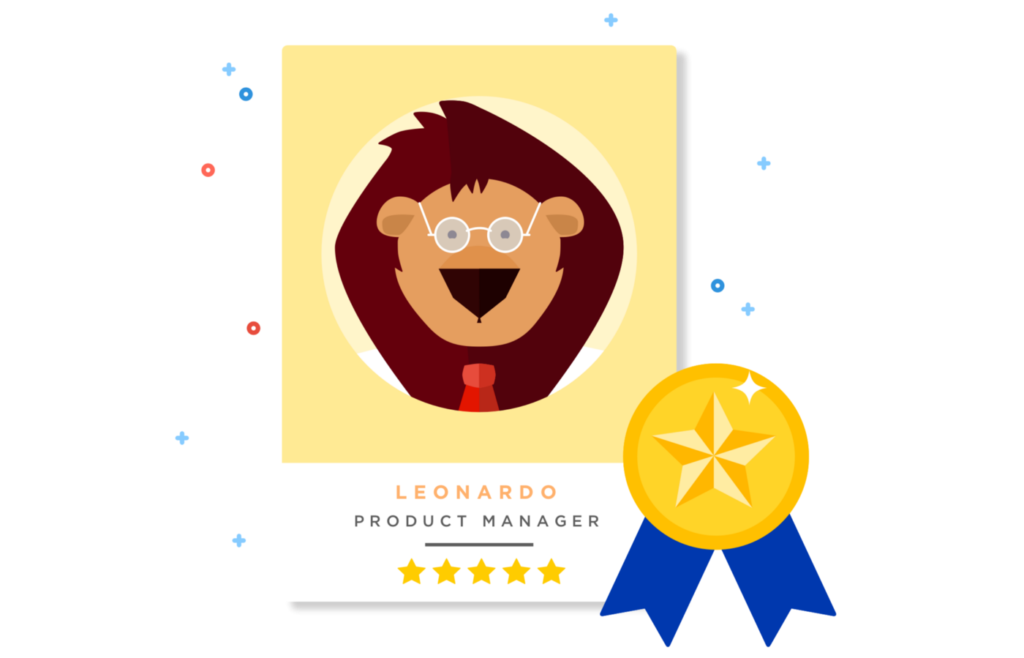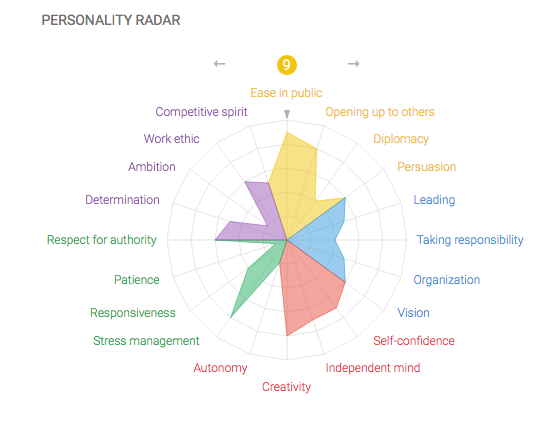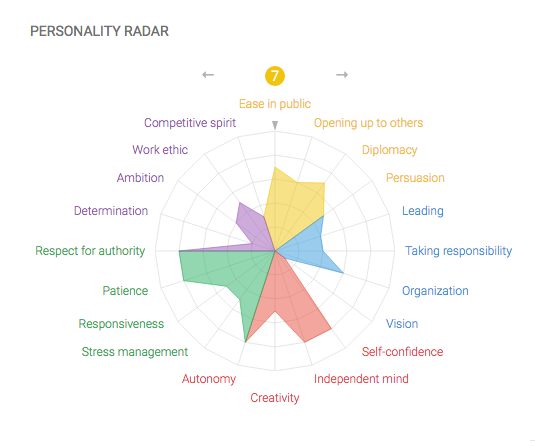Show Your Traits, Not Your Type

“What’s your type?” In the world of dating, this is the first thing people want to know. An easy answer, right? Intellectual, athletic, artistic — as humans, we typically begin with broad categories to describe ourselves and others. However, once you actually start describing what you’re looking for, you find yourself being more specific. “Likes to have philosophical conversations,” “enjoys outdoor activities in warm climates,” “likes to cook new recipes,” — in reality we are much more complex than those one word generalizations. The same philosophy should apply to soft skill assessments in the workplace. Instead of being bucketed into a generalized type, your traits are the best indicators of your unique strengths. Let’s break down the difference between types and traits.
Type Theory
Type theory is based around the idea that personality is a combination of qualities or dimensions that can be grouped together into a certain number of categories (or types). All people fall within one type based on which group they share the most specific attributes with. Think Myers Briggs or Enneagram, where you are one of 16 combinations of letters (ie, ESFJ) or one of 9 number types.
Yes, type theory is helpful for an organization to get a generalized idea of a person, but does that mean that a company really understands who you are, and more importantly, if you will be successful in the role? For example, if an assessment identifies you as an introvert, the assumption may be that that you are quiet, would prefer to work alone, and you need time to reflect on your thoughts before speaking. It’s a generalization, and while some of those assumptions may be true, chances are not all describe you.
The concern with using types in personality assessments is that humans are much more complex. Instead of Introversion and Extroversion being a dichotomy, it is better understood as a spectrum. That is where trait theory comes into play.
Trait theory
Rather than using broad categories to define human behaviors, trait theory focuses on the individual differences between people and eliminates the ‘boxes’ that type theory tries to fit people into. Going back to the introverted/extroverted example: trait theorists will say that a large majority of people actually fall somewhere in the middle and show qualities of both introverts and extroverts.
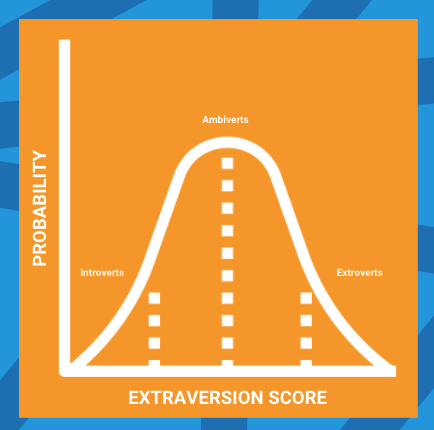
Research over the years has shown that there is enough of a variation in human personality for most of the scientific community to favor trait theory. Additionally, the most widely accepted theory of personality, the Big Five Theory, is part of trait theory. The Big Five is a theory in which five broad categories are the building blocks of personality, which most people have heard of using the acronym OCEAN: Openness, Conscientiousness, Extroversion, Agreeableness, and Neuroticism. Everyone falls on a spectrum in each of these categories, and sometimes these are broken down into smaller and more specific scales. This personality theory is the backbone of many of the personality assessments that are used today, like MyPrint® or the Big Five Inventory.
You are Unique!
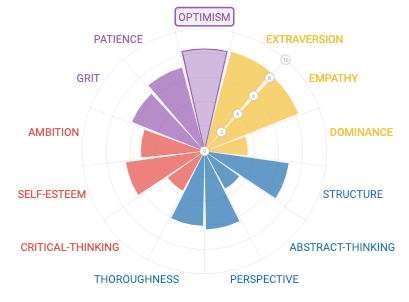
Now that you understand the differences between Types and Traits, which theory do you prefer when it comes to showcasing your soft skills? The one that generalizes you in a standard box, or the one that lets you expand outside those walls to showcase your unique qualities? If you want to discover more about your soft skill strengths, take a free MyPrint® assessment today! Once you have completed the questionnaire, you can begin using your traits to be more productive, improve your interpersonal skills, and set your personal and professional goals specific to your individual attributes. Additionally, you can see how your personality radar and motivation scales show the special qualities that make you YOU!
Looking for additional resources and support? Email Talentoday at customer@talentoday.com to learn more about our assessment and services!
We’ve improved our technology!

At Talentoday, we are focused on continuous improvement and in order to offer users with a more intuitive representation of candidates’ and employees’ Target Profile matching scores, we have slightly altered the science behind them. The new technology provides actionable data that is easier to understand and analyze.
We have improved our algorithm for our clients and in turn enhanced our performance. Our new method for computing the matching score allows us to be consistent with the matching visualization. This change allows for the following:
- Easy to understand matching score and improved analysis process.
- Users will know which criteria are the most essential because the criteria are now numbered in order of importance.
- Increased value for our candidates and employees, who will now be be able to better understand the the skills that are most important in their current or future role.
Matching Score vs Matching Visualization: How they come together
The matching score was initially built by taking into account the 28 criteria scores we measure at Talentoday. In comparison, the matching visualization, based off the Target Profile, considers the 8 most predominant criteria for the targeted population. This technical decision was originally made to obtain a matching score as precise as possible, which takes into account the subtle variations provided by the whole pattern of criteria scores. Because the score was measured against 28 criteria and the visualization on 8 there was some unneeded discrepancy.
To simplify things, we will now compute matching scores and matching visualizations based on the 8 predominant criteria from a targeted population. This will then ensure that we have matching scores that are consistent with the matching visualization. This is achieved through a proximity calculation, i.e. the matching score computation is only based on the 8 most predominant criteria previously identified by our machine learning algorithm.
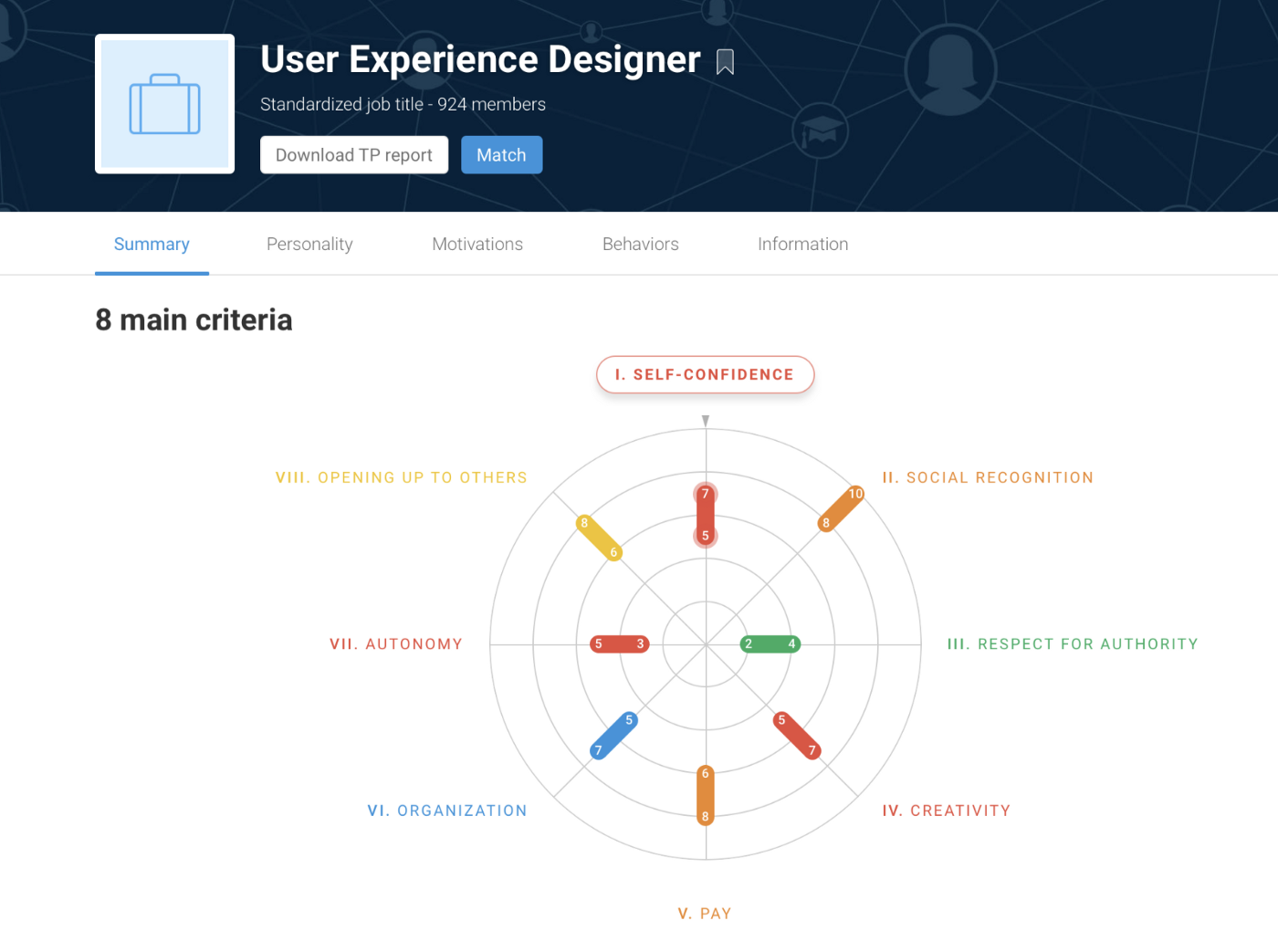
Another cool aspect of the new technology is the numbering of criteria in order of importance. Recruiters and managers can now easily pinpoint the essential criteria for a given role which can aid in the final decision making process.
If users experience questions we would love to chat. Please feel free to reach out to our support team. With this positive technology modification, some changes in matching score are to be expected.
This update will make the peoples’ experience more consistant and intuitive without changing users interaction with our platform.
We have much more to come as the year draws to a close. Our roadmap is packed with new ways to make our customers lives easier, and we look forward to sharing these with you soon.
For more information on other recent releases feel free to check out our blog. As always, your feedback is so important to us. If you wish to share and get in touch with us, give us a shout out on social media!
Quick and easy tips for getting ahead of hiring in the new year

As the cyclic trends of hiring goes, there is typically a lull in hiring at the end of the year. Despite the temptation to leave things until next year, this is in fact a critical time to get your ducks in a line for a peak hiring season in January.
With extra time on their hands away from the office, job seekers are going to be on the hunt for their next job. While hunting down candidates is not ideal during the holiday season, ensuring that your job needs are visible online can ensure you have a pile of worthy resumes in your inbox come January 1st.
1. Utilize social media platforms
Social media platforms are for the most part free, easy ways to connect with job seekers. Before you head out for the new year, take time to post something on your company’s LinkedIn stating that you are hiring, or better yet post a link to the careers page on your website with the specific jobs you are hoping to hire in the new year.
Not sure what positions you will be filling or what your numbers will be until year end? You can still use the platforms to build your brand identity. Job seekers, especially millennials, care about the culture of your company and will be looking for that when searching for their next job. Team up with your marketing team to show a little of your company’s unique personality. Better yet, post a personality test that is designed to show employees motivations and help them find the right job, increasing job retention, talk about a win-win! Not only will you be attracting people who care about being in a job where they are happy and inspired (therefore performing best) but you will be showing that you care about them too.
2. Be quick to respond
If you don’t get a flood of applicants through the holiday season or you work for a smaller company, I would consider dedicating a small amount of time bi-weekly during your time off to respond to applicants. It can be a one-lined, quick response with the applicant’s name saying something simple like: “Thank you for your interest in the position, Andrew! I am out of the office until 1/2/2017 but will get back to with what’s next then. Enjoy the New Year!” Reaching out in this way will create a positive first impression with the candidate who is more likely than not applying to several other positions at different companies.
If you work at a larger company where a personal response to each applicant would take a team the entire vacation to respond to, make it a goal to prioritize getting back to the candidates as soon as you get back to the office. Do not worry about filtering through the resumes or the available positions first, or you will not be responding until weeks, maybe months later.
3. Consider using HR analytics in the new year
The new year is the perfect opportunity to pitch your vision for what hiring will look like at your company in the new year. Hiring analytics are becoming increasingly popular and for good reason. Below are a few reasons to jump on the hiring analytic train. Here’s what Forbes thinks about it:
- Analytics serve as trustworthy future-casters (think HR’s crystal ball)
- It increases ROI
- It take out the guesswork
- Hiring becomes more efficient and effective
- Promotes more in-house promotions
- It pays for itself
As you coast into the new year, remember that a little bit of planning for 2017 can have big payoffs. Happy hiring in 2017!
Curious to find out if your candidates have what it takes? Start your free trial today and test your candidates quickly & effectively for free!
Let’s face it, recruiting can be difficult. Let us help. Check out our other posts about hiring trends, tips and tricks.
How to Build Team Effectiveness: Bringing Balance by Empowering Management
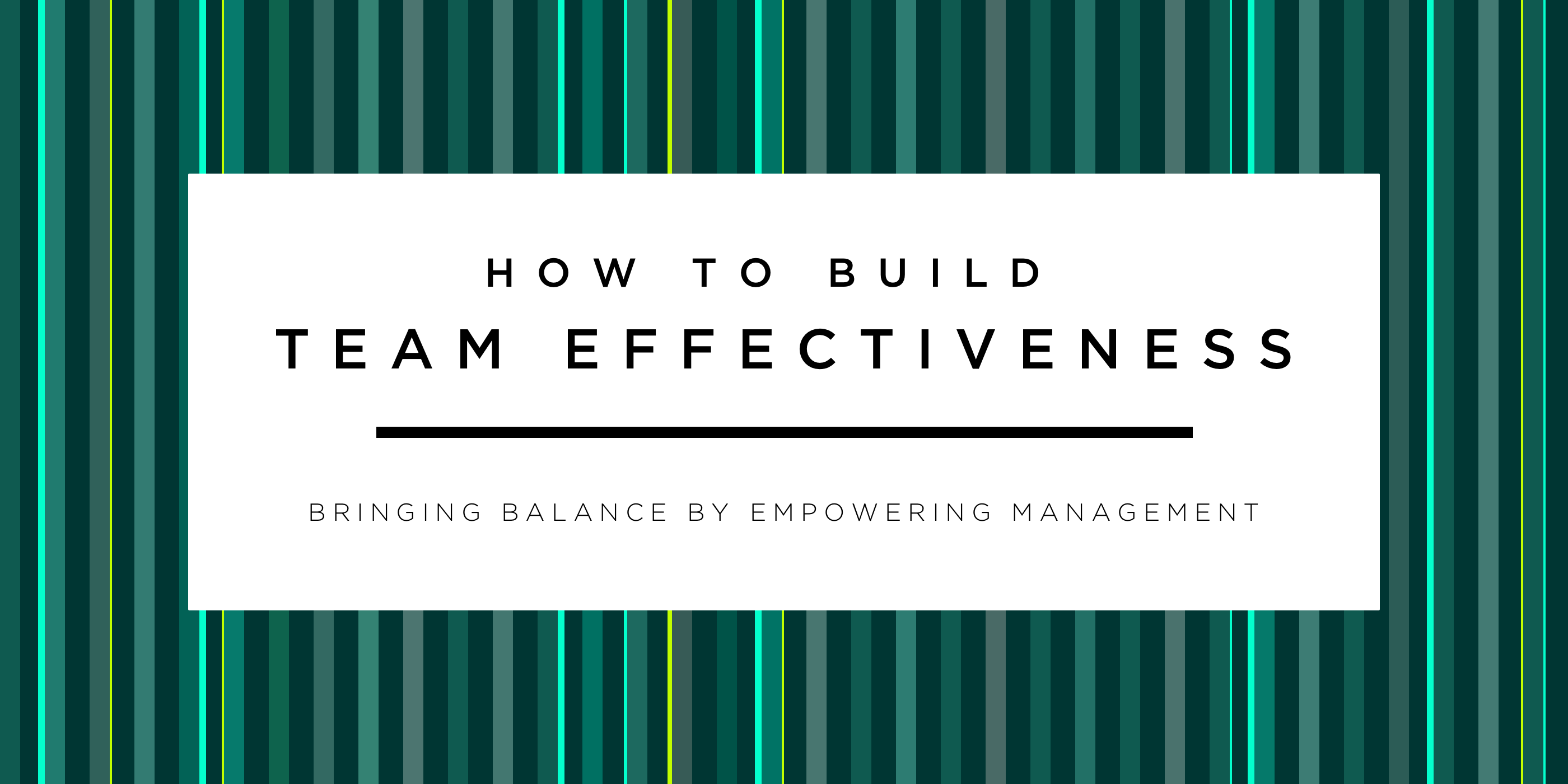
Last week I touched upon the importance of individual self-awareness for team effectiveness in Part 1 of this series, How to Build Team Effectiveness: It starts with the Individual. Today I will shift my attention to leadership within the team, and what managers should strive for when creating a balanced team.
I decided to interview a long-time successful leader, Gino Blefari, CEO of Berkshire Hathaway HomeServices. With 30 years of management experience under his belt and numerous awards in leadership and mentorship, I knew he would have a few nuggets on team effectiveness.
Gino first said that a key to his success in inspiring teams is that he is constantly learning. He is always picking up books and learning new techniques from authors new and old. The books he reads are not just business books, some are fictional novels, others autobiographies, all in which he is able to prune out important takeaways.
When I asked him what makes up a good team he got excited, telling me he had just read The Boys in the Boat, a feel-good story about superstar rowers on a quest to achieve Olympic victory. He said not only was the story incredibly inspirational, but weaved in the keys to a successful team that are applicable to every industry and profession.
“Crew races are not won by clones. They are won by crews, and great crews are carefully balanced blends of both physical abilities and personality types … And capitalizing on diversity is perhaps even more important when it comes to the characters of oarsmen. Good crews are good blends of personalities; someone to lead the charge, someone to hold something in reserve; someone to pick a fight, someone to make peace; someone to think things through, someone to charge ahead without thinking. Somehow all this must mesh. That’s the steepest challenge.”
It goes without saying that every team is different. What makes a team dynamic and productive is having variety. Building on the knowledge of an individual’s skill set, managers can harness their unique skills to build teams with balance. A smart manager knows what to look for but often has little time. Gino & I discussed that his busy schedule has pushed him to make every minute count.
As a manager, it is your job to create an environment that fosters this idea of synergy. Synergy is defined as the interaction or cooperation of two or more individuals to produce a combined effect greater than the sum of their separate effects. When I asked Gino how he achieves this with his teams, he was ready with an answer,
“The closer the team is together, the better the team will perform together. When individuals become accountable to their teammates, that’s when productivity grows exponentially.”
Every time someone new joins his team they are assigned an accountability partner. You are responsible for talking to your partner every day, whether it is a call or an in person meeting. The goal of the call is to get to know your teammate as an individual, aside from work. In a dream world this would happen with every new hire across all companies. But time and expansion can cause managers to cut corners when getting to know their teammates, throwing a wrench in that whole “synergy” thing.
So how can we stay in tune with our employees changing needs especially when we are pressed for time? One option might rely on technology. For instance, Talentoday, a people analytics platform and soft skills personality assessment, allows a manager to become the psychologist who can artfully concoct the perfect blend of personalities to create an effective team.
Similar to Gino’s “accountability partner” idea, Talentoday’s Premium Development Report allows you get an in depth analysis of an individual’s personality traits and motivators in the work place. Everyone is unique and we all have different drives that get us out of bed in the morning. As a manager, having these insights in your back pocket would no doubt give you the information you need to keep your employees engaged.
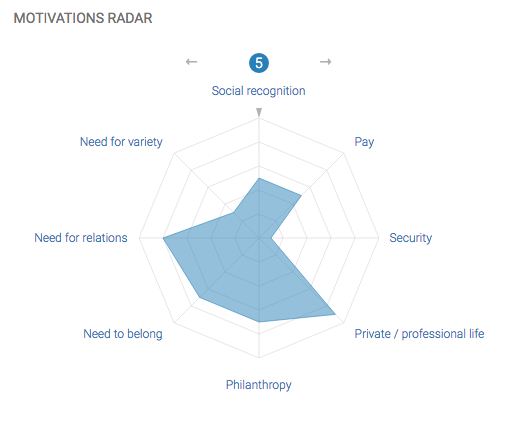
But this idea of getting to know your employee both personally and professionally only works if you have hired the right individual in the first place. Which brings me to my final thought; fostering team effectiveness begins with recruiting the right people. Next week we will take a look at the recruiting process and the important combination of data and intuition when selecting people to join your team.
Curious to find out your professional traits? Check out our page to take your free personality assessment today. And if you like this post, please hit the ❤️ button below or give me a shout on Twitter.
How to Build Team Effectiveness: It starts with the Individual
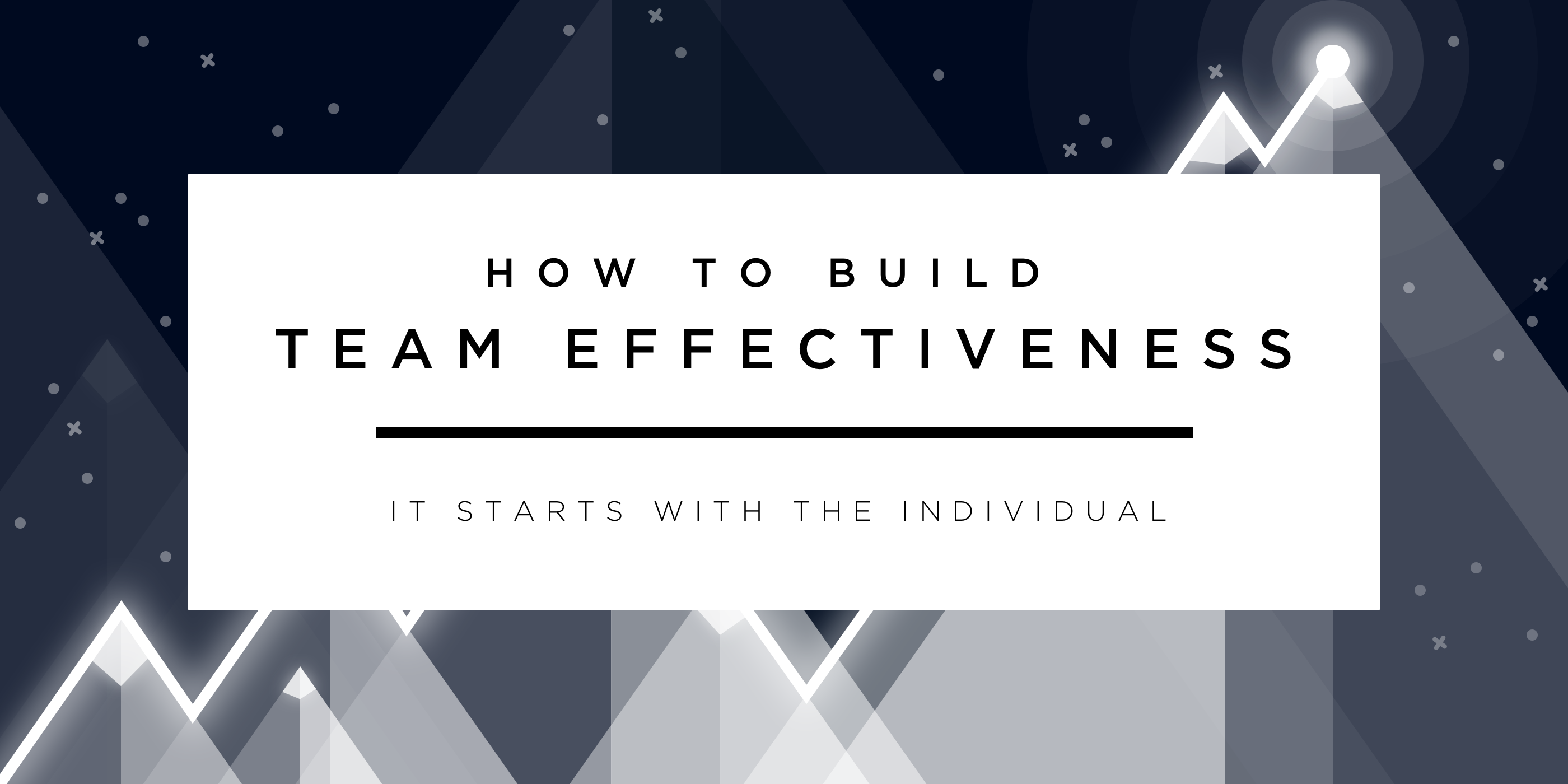
We have been conditioned since we were children to use teamwork. As a toddler you worked with your imagination and your team of playmates to create a different world. Or maybe you worked with your siblings to build the most effective Lego fortress. Learning and productivity and the uniqueness of your work was most likely positively correlated to the ability of you and your teammates, friends, siblings to communicate. You knew your skills and you weren’t afraid to express and utilize them.
Fast forward 20, 30 maybe 40 years and you now know the “best” characteristics to have as a teammate (thanks, Google). It doesn’t matter what your natural skills are, you have read studies about what employers want to hire and you identify with that to make you competitive. You probably believe yourself by now! You alter your skill set for the job. Anyone who has edited their resume for a certain job can relate…
Things are a little backwards right now. A job is open and we try to fit the person in the job instead of fitting the job to the person.
An opening in a team arises and we add someone based on their experience and usually don’t have much of an idea about how they will work on a team besides the characteristics they portrayed from their years of research on what you want to hear. We hire in hopes that they will fit with the team dynamic.
I thought I knew a lot about my natural skill set because I love personality tests. Myers-Briggs, the Enneagram, you name it I have taken it. The thing about these tests is they were putting me in a box again. Fitting me to the type instead of the type to me. My colleague and I have the exact same Myers-Briggs score. We are both ENFJ’s which account for about 5% of the population. The Enneagram also named us both “The Helper”. I can tell you right now if you put us on a team we will not be doing the same job and we both bring very different skills to the table in a team environment.
So we are left with a disconnect of how our personality can help us be effective on a team. How our natural characteristics can transfer into the workplace. It was not until I took this questionnaire that I had clarity on how my personality skills can serve me on a team. I passed the test onto my colleague and was surprised, but then again not, that our results were far from the same.
If you are the individual reading this, it’s time to get honest. Take yourself out of the work equation for a moment and think about what part you play on the team at home, with your friends, or in public. Think of your instinctual skills and try to bring that to your work team. Maybe have a conversation with your manager about how you can bring your skill set to the forefront of your work.
If you are a manager, hold tight! Now that we know the success of the team is built on individual awareness, we can turn our attention to the factors of building the most effective and productive team in Part 2 of How to Build Team Effectiveness: Bringing Balance with Empowering Management.
Curious to find out your professional traits? Check out our page to take your free personality assessment today. And if you like this post, please hit the ❤️ button below or give me a shout on Twitter.
The Importance of Company Culture and How to Hire the Right Fit

6 tips on hiring employees who wont run for the door.
Everyone likes to wake up wanting to go to work! And every company wants their employees to be motivated, productive and loyal. One of the biggest factors in fostering a hard-working, happy team is by not only creating a vibrant company culture, but also making sure new employees fit into your company’s unique style. Whether your company is a more casual, “8–5”, family friendly environment, or a high pressure, career lifestyle, competitive, highly results-oriented workplace, using smart recruiting tools like predictive analytics to evaluate candidates will help ensure the perfect match.
Programs that foster company culture like flex time, happy hours, volunteer work, recognition opportunities, cross departmental “lunch and learn” events, competitive pay structures and opportunities for bonuses all make employees less likely to take calls from other companies.

“Culture is the number one contributing factor to every single aspect of the employment relationship — from both the employee and company perspective,” says Amber Rhoton, Owner/President of Owner and Chief HR Advisor for Amplified HR. “A strong culture is the fastest way to weed out under-performers and cultivate superstars.”
Here’s how to find the perfect match for your company’s culture and avoid costly hiring mistakes. Job searchers, listen up to increase your chances of getting hired!
- Ask candidates to take a personality test such as Talentoday’s which in a few clicks provides a comparison of the candidate to your current workforce and is designed to allow you to get an idea of who a person really is and what motivates him or her.
- Have multiple people speak with the candidate to see how well he or she meshes with different personalities. Also, meet a candidate on several occasions on different days and times to gauge the consistency of the fit.
- Watch how a candidate interacts with the receptionist. It may seem minor, but you want to hire a genuinely nice person. If someone is cold or rude to the person they are first meeting in the lobby, it’s not a good sign.
- Check references, and not just the ones a candidate gives you. Dig a little deeper and find an objective opinion on someone’s past performance and potential fit. It’s hard work but will pay off to avoid hiring the wrong person.
Observe how smoothly offer negotiations go. If a candidate negotiates heavily and isn’t easy to work with during that process, it’s a sign they aren’t the right person for the job. - Ask the hard questions. If you know your company’s culture requires night and weekend work, find out how a candidate will handle that. Be transparent on all the down sides of a position and when someone is still excited to join, you’ll know they’re right for the role.
“Match your applicants with your culture and the rest will fall into place,” says Rhoton. It’s way more important, in my opinion, than skill set or experience.”
By ensuring your new hires match your company’s dynamic, you’ll not only reduce your turnover but also increase engagement and overall performance of the entire team. And with today’s easy-to-use candidate-culture matching technology, there’s no excuse not to!
What’s your management style? Infographic with women vs. men comparison
One day we may all be promoted to a management position. Experience and career advancement push us towards positions with more responsibilities, so what kind of managers will we be? Depending on our personalities, we will adopt different types of attitudes and behaviors.
A leader’s personality varies widely. In fact, there are as many different ways to manage people as there are people on earth. Management style is the result of the manager’s environment as well as his or her true character. In order to be most effective, the style must be adapted to each situation*. Adopting the same behavior for each situation could be a real problem for people leading teams and projects.
Paul Hersey and Kenneth Blanchard proposed a typology of 4 main management styles. To understand the different types, we need to take various factors into account, such as the natural tendency to lead of the people, or the manager’s ability to open up to other people’s ideas.
Let’s take a look at the four types introduced by Hersey and Blanchard, and how they can exist in the workplace:
- Autocratic Management: The manager makes decisions within the team, acting as an example for others. Especially in times of stress, employees may enjoy working with an autocratic leader. They may enjoy being told exactly what to do and having someone step up, take initiative, and take control of the situation. This management style can be especially effective when decisions are needed on an urgent basis, but can be somewhat stressful for some employees when the added pressure plays against them, hindering their performance and the overall atmosphere in the workplace.
- Paternalistic Management: The manager devotes time to pedagogy, taking the time to explain decisions and coach the team. In this style of management, the relationship between leaders and their employees is similar to the relationship between the head of a family and the members of the family. The manager in this sense is guiding and protecting his employees as if they are members of his own family. This approach can be difficult when used with senior professionals, who may not like their own interests looked after so attentively. Instead of gratitude, it may bring about resentment among senior-level employees, so may be a more successful style for use with entry-level employees who are in need of a more hands-on approach. The relationships between these coworkers and their leader are extremely solid.
Democratic Management: The manager encourages the participation of the team and includes their point of view in the final decision. This style is a very open way of organizing a team. Ideas are encouraged, and are openly discussed within the group. Everyone is encouraged to share their point of view. With situations of frequent change, this form of management allows for a great deal of flexibility in order to adapt and improve. Democratic management may bring out the best in a highly-experienced team, capitalizing on their skills, talents and experience, allowing them to share their views, rather than expecting employees to conform to one idea. This style may be inefficient in times of emergency or rush, as the decision-making process is longer. - Delegative Management: The manager leaves decisions up to the team, empowering others to develop and grow their ideas. This style is also known as laissez-faire or hands-off, as it empowers employees to strengthen their own management and personal leadership skills during the process. The leader assigns tasks to employees, while providing adequate support and resources to complete them, and the employees are responsible for each of their own projects. While the manager is still held responsible for the final product, this style expresses trust in employees, and allows the manager to be available to employees for feedback and growth. When the team needs too much reassurance or encouragement, the style might not be adapted, especially during stressful situations or with entry-level employees.
So, what’s your management style?
With data collected through Talentoday’s analytical tools, we developed the following infographic illustrating the preferred management styles of men and women around the world.
*The Situational Leadership Theory, Paul Hersey and Kenneth Blanchard (1967)
Learn more about Talentoday and take the scientifically designed assessment:www.talentoday.com


